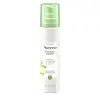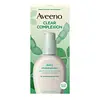What's inside
What's inside
 Key Ingredients
Key Ingredients

No key ingredients
 Benefits
Benefits

 Concerns
Concerns

 Ingredients Side-by-side
Ingredients Side-by-side

Water
Skin ConditioningSodium Cocoyl Glycinate
CleansingCocamidopropyl Betaine
CleansingPEG-80 Sorbitan Laurate
Acrylates/C10-30 Alkyl Acrylate Crosspolymer
Emulsion StabilisingCaprylyl Glycol
EmollientSodium Lauroamphoacetate
CleansingEthylhexylglycerin
Skin ConditioningPhenoxyethanol
PreservativeSodium Hydroxide
BufferingParfum
MaskingActinidia Chinensis Fruit Water
MaskingTetrasodium EDTA
PEG-45m
HumectantButylene Glycol
HumectantYeast Extract
Skin ConditioningGlycine Soja Protein
EmulsifyingWater, Sodium Cocoyl Glycinate, Cocamidopropyl Betaine, PEG-80 Sorbitan Laurate, Acrylates/C10-30 Alkyl Acrylate Crosspolymer, Caprylyl Glycol, Sodium Lauroamphoacetate, Ethylhexylglycerin, Phenoxyethanol, Sodium Hydroxide, Parfum, Actinidia Chinensis Fruit Water, Tetrasodium EDTA, PEG-45m, Butylene Glycol, Yeast Extract, Glycine Soja Protein
Salicylic Acid 0.5%
MaskingWater
Skin ConditioningC12-15 Alkyl Benzoate
AntimicrobialCetearyl Alcohol
EmollientDimethicone
EmollientMethyl Gluceth-20
HumectantPPG-10 Cetyl Ether
Skin ConditioningBis-Phenylpropyl Dimethicone
Arachidyl Alcohol
EmollientBehenyl Alcohol
EmollientGlycine Soja Seed Extract
Skin ConditioningGlycerin
HumectantIsoceteth-20
EmulsifyingPolyacrylamide
Cetearyl Glucoside
EmulsifyingArachidyl Glucoside
EmulsifyingC13-14 Isoparaffin
EmollientEthylene/Acrylic Acid Copolymer
Emulsion StabilisingParfum
MaskingLaureth-7
EmulsifyingDisodium EDTA
BHT
AntioxidantSodium Hydroxide
BufferingCitric Acid
BufferingSalicylic Acid 0.5%, Water, C12-15 Alkyl Benzoate, Cetearyl Alcohol, Dimethicone, Methyl Gluceth-20, PPG-10 Cetyl Ether, Bis-Phenylpropyl Dimethicone, Arachidyl Alcohol, Behenyl Alcohol, Glycine Soja Seed Extract, Glycerin, Isoceteth-20, Polyacrylamide, Cetearyl Glucoside, Arachidyl Glucoside, C13-14 Isoparaffin, Ethylene/Acrylic Acid Copolymer, Parfum, Laureth-7, Disodium EDTA, BHT, Sodium Hydroxide, Citric Acid
Ingredients Explained
These ingredients are found in both products.
Ingredients higher up in an ingredient list are typically present in a larger amount.
Parfum is a catch-all term for an ingredient or more that is used to give a scent to products.
Also called "fragrance", this ingredient can be a blend of hundreds of chemicals or plant oils. This means every product with "fragrance" or "parfum" in the ingredients list is a different mixture.
For instance, Habanolide is a proprietary trade name for a specific aroma chemical. When used as a fragrance ingredient in cosmetics, most aroma chemicals fall under the broad labeling category of “FRAGRANCE” or “PARFUM” according to EU and US regulations.
The term 'parfum' or 'fragrance' is not regulated in many countries. In many cases, it is up to the brand to define this term.
For instance, many brands choose to label themselves as "fragrance-free" because they are not using synthetic fragrances. However, their products may still contain ingredients such as essential oils that are considered a fragrance by INCI standards.
One example is Calendula flower extract. Calendula is an essential oil that still imparts a scent or 'fragrance'.
Depending on the blend, the ingredients in the mixture can cause allergies and sensitivities on the skin. Some ingredients that are known EU allergens include linalool and citronellol.
Parfum can also be used to mask or cover an unpleasant scent.
The bottom line is: not all fragrances/parfum/ingredients are created equally. If you are worried about fragrances, we recommend taking a closer look at an ingredient. And of course, we always recommend speaking with a professional.
Learn more about ParfumSodium Hydroxide is also known as lye or caustic soda. It is used to adjust the pH of products; many ingredients require a specific pH to be effective.
In small amounts, sodium hydroxide is considered safe to use. However, large amounts may cause chemical burns due to its high alkaline.
Your skin has a natural pH and acid mantle. This acid mantle helps prevent harmful bacteria from breaking through. The acid mantle also helps keep your skin hydrated.
"Alkaline" refers to a high pH level. A low pH level would be considered acidic.
Learn more about Sodium HydroxideWater. It's the most common cosmetic ingredient of all. You'll usually see it at the top of ingredient lists, meaning that it makes up the largest part of the product.
So why is it so popular? Water most often acts as a solvent - this means that it helps dissolve other ingredients into the formulation.
You'll also recognize water as that liquid we all need to stay alive. If you see this, drink a glass of water. Stay hydrated!
Learn more about Water